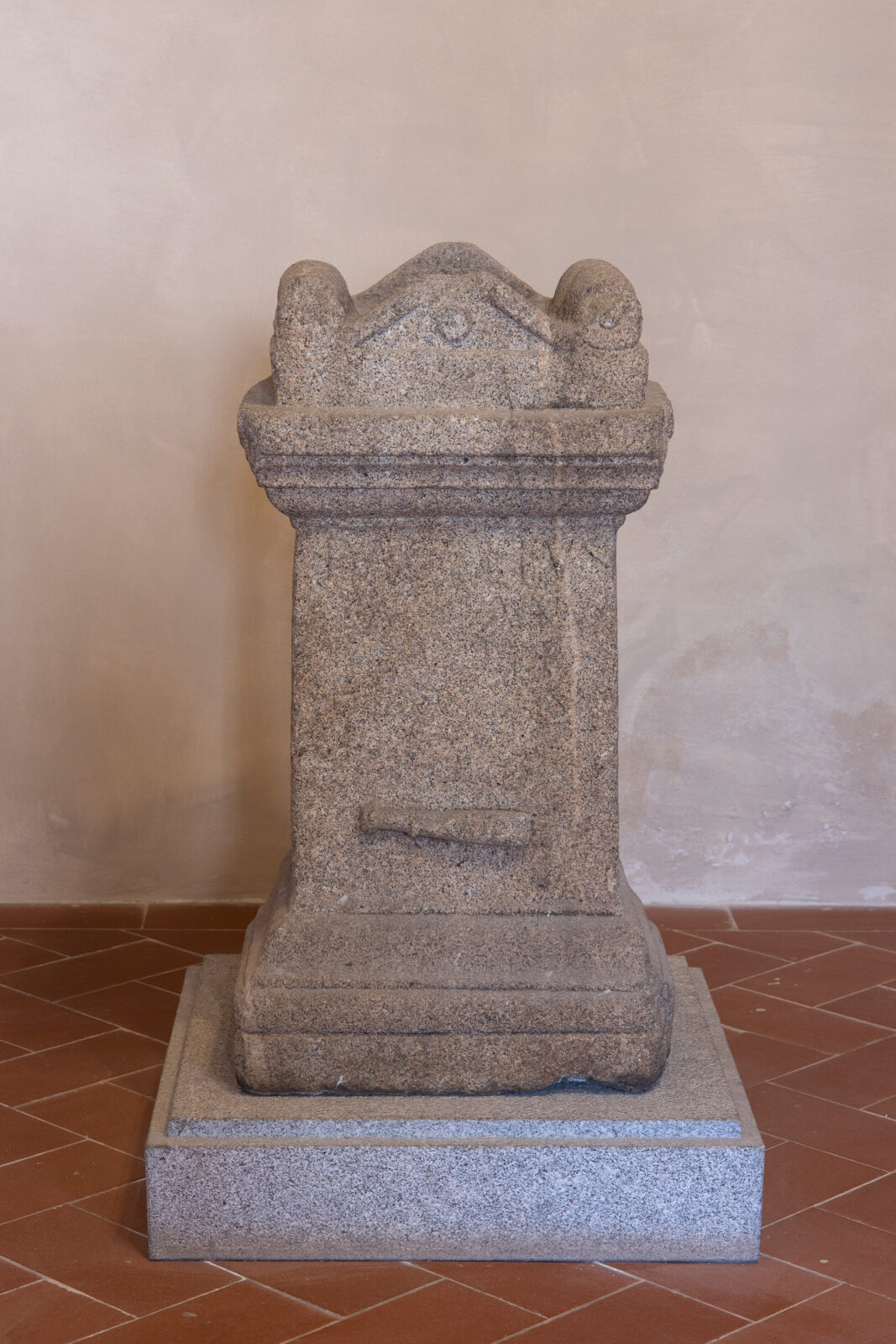Granite altar from the period of Hadrian’s rule
Quadrangular in shape, dating from the 2nd century AD and found near Fosso dell'Inferno, Seccheto, in 1889. On the lower side there is an inscription and a club, the Herculean symbol par excellence, while on the opposite side there is a sword and a shield, referring to the military office (prefect of the praetorium) held by the official Publius Acilius Attianus.
The epigraph reads P. Acilius/ Attianus/ praef(ectus) pr(aetorio)/ Herculi san/cto d(onum) d(edit), and therefore refers to the dedication of the altar to ''Holy Hercules'' gifted by Publius Acilius Attianus, who at that time was prefect of the praetorium.
The cult of Hercules was particularly important in the politics and propaganda of the emperor Hadrian, who inherited the association with Hercules Gaditanus from his predecessor. “Holy Hercules” was sometimes invoked in conjunction with deities such as Silvanus and the Campestres, and the inscription was quite widely used, after those of victo and invictus, in both civil and military inscriptions. It is understood that this inscription could refer to the protector of a large house (domus) and could therefore suggest the presence of an aristocratic villa.
L’epigrafe riporta P. Acilius/ Attianus/ praef(ectus) pr(aetorio)/ Herculi san/cto d(onum) d(edit), dunque si riferisce alla dedica dell’altare ad ‘’Ercole santo’’ fatta come dono da Publio Acilio Attiano, che in quel periodo rivestiva la carica di prefetto del pretorio.
Il culto di Ercole ebbe particolare rilievo nella politica e nella propaganda di Adriano, poiché ereditò il tema dell’Hercules Gaditanus dalla propaganda del predecessore; inoltre l’epiclesi di Ercole Sanctus applicata talvolta in concomitanza con divinità come Silvanus e i Campestres, era piuttosto diffusa dopo quelle di victo e invictus nelle iscrizioni dell’alto impero, sia civili, sia militari: è attestato come questo potesse riferirsi alla funzione di protettore delle grandi case (domus) e quindi legarsi alla presenza di una villa aristocratica.
